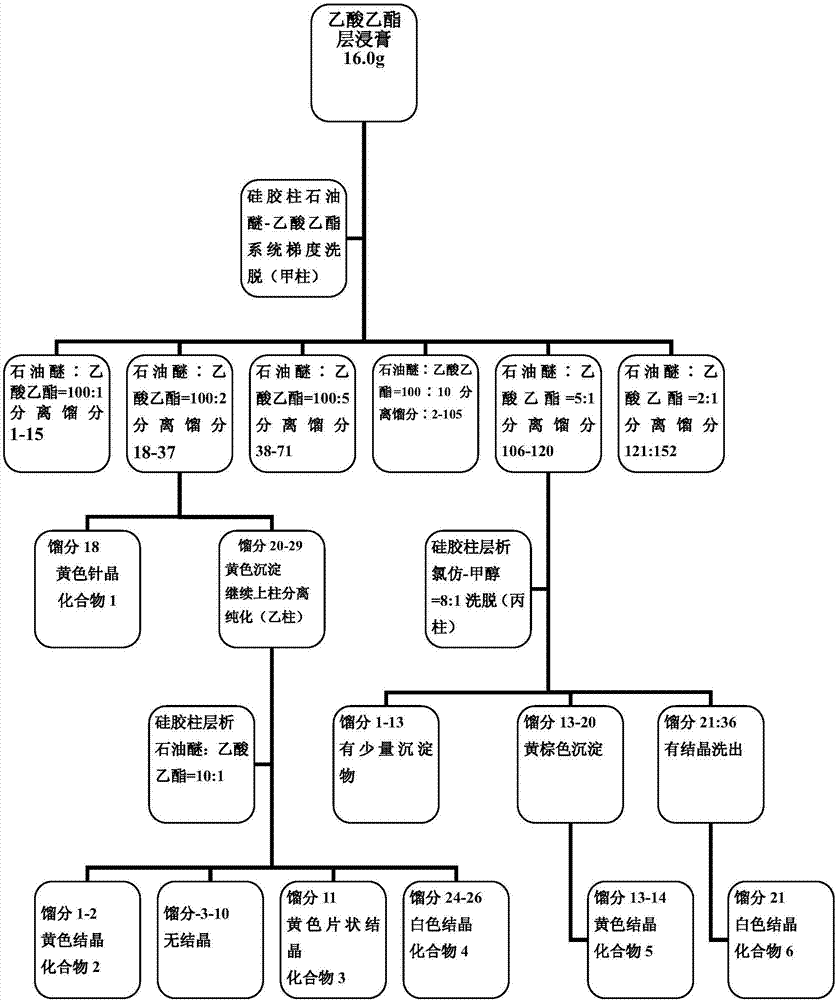Method for extraction, separation and histochemical localization of flavones in seven-color bamboo culm
A technology of flavonoids and histochemistry in bamboo, applied in chemical instruments and methods, steroids, organic chemistry, etc., can solve the problems of lack of component content, lack of research on the distribution and localization of flavonoids, etc.
- Summary
- Abstract
- Description
- Claims
- Application Information
AI Technical Summary
Problems solved by technology
Method used
Image
Examples
Embodiment 1
[0040] experiment material:
[0041] Colorful bamboo (Indosasa hispida McClure "rainbow") is a plant of the genus Indosasa in the subfamily Bambusoideae of the family Poaceae. The culm is 2‐3m high and 1~3cm in diameter. There are small bristles on the surface when it is young, and then it falls off and becomes glabrous, with white powder below the nodes; there are more than 3 branches in each node in the middle of the culm, and the branches are erect. The middle and lower parts of the bamboo culm are different. Degree of red to purple. Leaf blade presents light yellow stripes, band-like lanceolate or lanceolate, outer length 9-23cm, width 1.5-4cm, apex long and acuminate, base cuneate or wide cuneate, lower surface often pubescent, rarely glabrous , with small serrations on both edges, 5-6 pairs of secondary veins, and obvious small transverse veins. Distributed in the tropical and subtropical mountains of southern Yunnan. The bamboo stalks are red to purple in varying deg...
PUM
 Login to View More
Login to View More Abstract
Description
Claims
Application Information
 Login to View More
Login to View More - Generate Ideas
- Intellectual Property
- Life Sciences
- Materials
- Tech Scout
- Unparalleled Data Quality
- Higher Quality Content
- 60% Fewer Hallucinations
Browse by: Latest US Patents, China's latest patents, Technical Efficacy Thesaurus, Application Domain, Technology Topic, Popular Technical Reports.
© 2025 PatSnap. All rights reserved.Legal|Privacy policy|Modern Slavery Act Transparency Statement|Sitemap|About US| Contact US: help@patsnap.com



